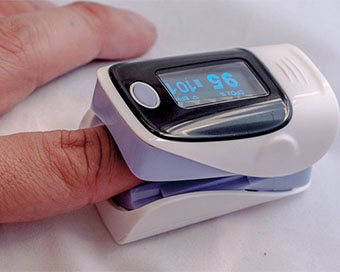Gallery
 PM Modi visit USA
PM Modi visit USA Only the mirror in my washroom and phone gallery see the crazy me : Sara Khan
Only the mirror in my washroom and phone gallery see the crazy me : Sara Khan Karnataka rain fury: Photos of flooded streets, uprooted trees
Karnataka rain fury: Photos of flooded streets, uprooted trees Cannes 2022: Deepika Padukone stuns at the French Riviera in Sabyasachi outfit
Cannes 2022: Deepika Padukone stuns at the French Riviera in Sabyasachi outfit Ranbir Kapoor And Alia Bhatt's Wedding Pics - Sealed With A Kiss
Ranbir Kapoor And Alia Bhatt's Wedding Pics - Sealed With A Kiss Oscars 2022: Every Academy Award Winner
Oscars 2022: Every Academy Award Winner Shane Warne (1969-2022): Australian cricket legend's life in pictures
Shane Warne (1969-2022): Australian cricket legend's life in pictures Photos: What Russia's invasion of Ukraine looks like on the ground
Photos: What Russia's invasion of Ukraine looks like on the ground Lata Mangeshkar (1929-2022): A pictorial tribute to the 'Nightingale of India'
Lata Mangeshkar (1929-2022): A pictorial tribute to the 'Nightingale of India' PM Modi unveils 216-feet tall Statue of Equality in Hyderabad (PHOTOS)
PM Modi unveils 216-feet tall Statue of Equality in Hyderabad (PHOTOS)The Badminton Association of India (BAI) has announced a 14-member-strong India squad for
- Men’s Sr Hockey Nationals to be played in division-based format from April 4
- Mensik denies Djokovic 100th title in Miami final
- KIPG: Son of a vegetable vendor, Bihar’s Jhandu Kumar eyes Worlds, 2028 Paralympics
- Hardik Singh credits hard work and team unity for receiving HI Midfielder of the Year award
- Djokovic, Alcaraz land in same half of Miami draw
Study explains why COVID-19 can cause silent hypoxia Last Updated : 30 Nov 2020 05:15:05 PM IST 
Oxymeter Scientists have finally begun to crack one of the most life-threatening mysteries behind the relationship between silent hypoxia and Covid-19 virus by using computer models.
Silent hypoxia is a condition when oxygen levels in the body are abnormally low, which can irreparably damage vital organs if gone undetected for too long."Despite experiencing dangerously low levels of oxygen, many people infected with severe cases of Covid-19 sometimes show no symptoms of shortness of breath or difficulty breathing," said study authors from the Boston University in the US.The study, published in the journal Nature Communications, used computer modeling to test out three different scenarios that help explain how and why the lungs stop providing oxygen to the bloodstream.The researchers revealed that silent hypoxia is likely caused by a combination of biological mechanisms that may occur simultaneously in the lungs of Covid patients.They first looked at how Covid impacts the lungs' ability to regulate where blood is directed.Normally, if areas of the lung aren't gathering much oxygen due to damage from infection, the blood vessels will constrict in those areas."This is actually a good thing that our lungs have evolved to do, because it forces blood to instead flow through lung tissue replete with oxygen, which is then circulated throughout the rest of the body," the team said.But preliminary clinical data have suggested that the lungs of some Covid-19 patients had lost the ability of restricting blood flow to already damaged tissue, and in contrast, were potentially opening up those blood vessels even more--something that is hard to see or measure on a CT scan.Using a computational lung model, the team tested that theory, revealing that for blood oxygen levels to drop to the levels observed in Covid-19 patients, blood flow would indeed have to be much higher than normal in areas of the lungs that can no longer gather oxygen -- contributing to low levels of oxygen throughout the entire body.Next, they looked at how blood clotting may impact blood flow in different regions of the lung.When the lining of blood vessels get inflamed from Covid infection, tiny blood clots too small to be seen on medical scans can form inside the lungs.They found, using computer modeling of the lungs, that this could incite silent hypoxia, but alone it is likely not enough to cause oxygen levels to drop as low as the levels seen in patient data.Last, the researchers used their computer model to find out if Covid-19 interferes with the normal ratio of air-to-blood flow that the lungs need to function normally.This type of mismatched air-to-blood flow ratio is something that happens in many respiratory illnesses, such as with asthma patients, and it can be a possible contributor to the severe, silent hypoxia that has been observed in Covid patients.The models suggest that for this to be a cause of silent hypoxia, the mismatch must be happening in parts of the lung that don't appear injured or abnormal on lung scans.IANS New York For Latest Updates Please-
Join us on
Follow us on








172.31.16.186







